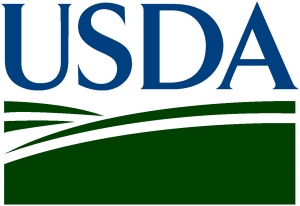
Agricultural News
New Program Allows More Farm Loans for "Highly Fractionated" Tribal Land
Tue, 01 Dec 2015 14:39:57 CST

The U.S. Department of Agriculture (USDA) Tuesday announced that it is expanding the availability of farm loans for Indian tribes and members to purchase tribal farmland that has multiple owners. The improved lending opportunities are possible due to new authority granted by the 2014 Farm Bill, which allows USDA to provide revolving loan funds to qualified intermediary lenders that can relend the funds to qualified tribes and individuals. The program becomes available today, Dec.1, 2015.
"Under the Obama Administration, we have strived to build a new era for civil rights at USDA and ensure all customers and employees are treated fairly. As part of this commitment, we have consulted with Indian tribes to improve USDA policies, including the new lending program we are announcing today," said Val Dolcini Farm Service Agency (FSA) Administrator. "As a direct result of more than a dozen tribal meetings across the country, USDA is able to implement a solution to a longstanding barrier to financing, which will increase the availability of farm loans to Native Americans who want to start or expand a farming or ranching operation on Indian lands."
Under the 1887 Dawes Act, Indian reservation land was divided and allotted to individual tribal members such that with the passing of each generation, title ownership was divided and parceled among heirs, while the land was not. As a result, land once owned by a single person could today be owned by hundreds or thousands of individuals, resulting in what is known as "highly fractionated Indian land." In many instances, landowners are unknown or cannot be located, which complicates the coordination of ownership or prevents the use of the property altogether. There are more than 245,000 owners of three million fractionated land interests, spanning approximately 150 Indian reservations.
Under the rules published today, USDA will now allow tribes and tribal members to submit a farm loan application to an intermediary lender. To participate, intermediary lenders first must be approved by USDA. The lenders may be private and tribal nonprofit corporations, public agencies, Indian tribes, or lenders subject to federal or state regulation (such as a credit union or other financial institution). FSA will lend to the intermediary, which will relend to the applicant. The intermediary lender also will administer the loan for the applicant.
Additional information on guidelines and criteria for intermediate lenders and how to file a loan application under Highly Fractionated Indian Land loan program will be shared Dec. 7, 2015 at the Intertribal Agriculture Council (IAC) meeting and Tribal consultation in Las Vegas, Nev. For more information, visit www.fsa.usda.gov/farmloans or contact the local FSA county office. To find the local FSA office, visit http://offices.usda.gov.
USDA also has opened a 90-day period for the public to submit comments on this program. Written comments must be submitted by Feb. 29, 2016, at www.regulations.gov, using Regulation Identifier Number 0560-AI32.
This program was made possible by the 2014 Farm Bill, which builds on historic economic gains in rural America over the past six years, while achieving meaningful reform and billions of dollars in savings for taxpayers. Since enactment, USDA has made significant progress to implement each provision of this critical legislation, including providing disaster relief to farmers and ranchers; strengthening risk management tools; expanding access to rural credit; funding critical research; establishing innovative public-private conservation partnerships; developing new markets for rural-made products; and investing in infrastructure, housing and community facilities to help improve quality.
WebReadyTM Powered by WireReady® NSI
Top Agricultural News
More Headlines...




















